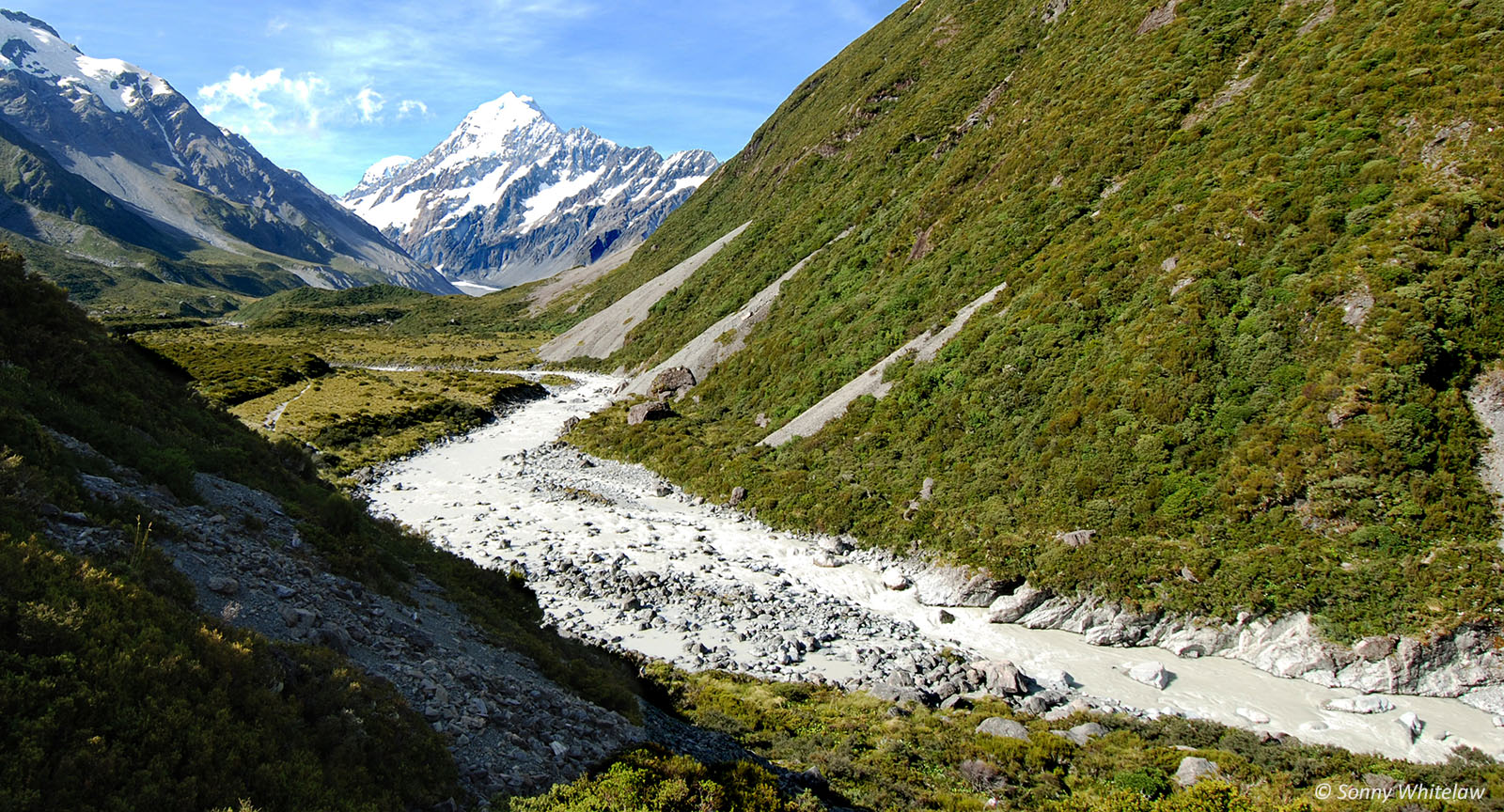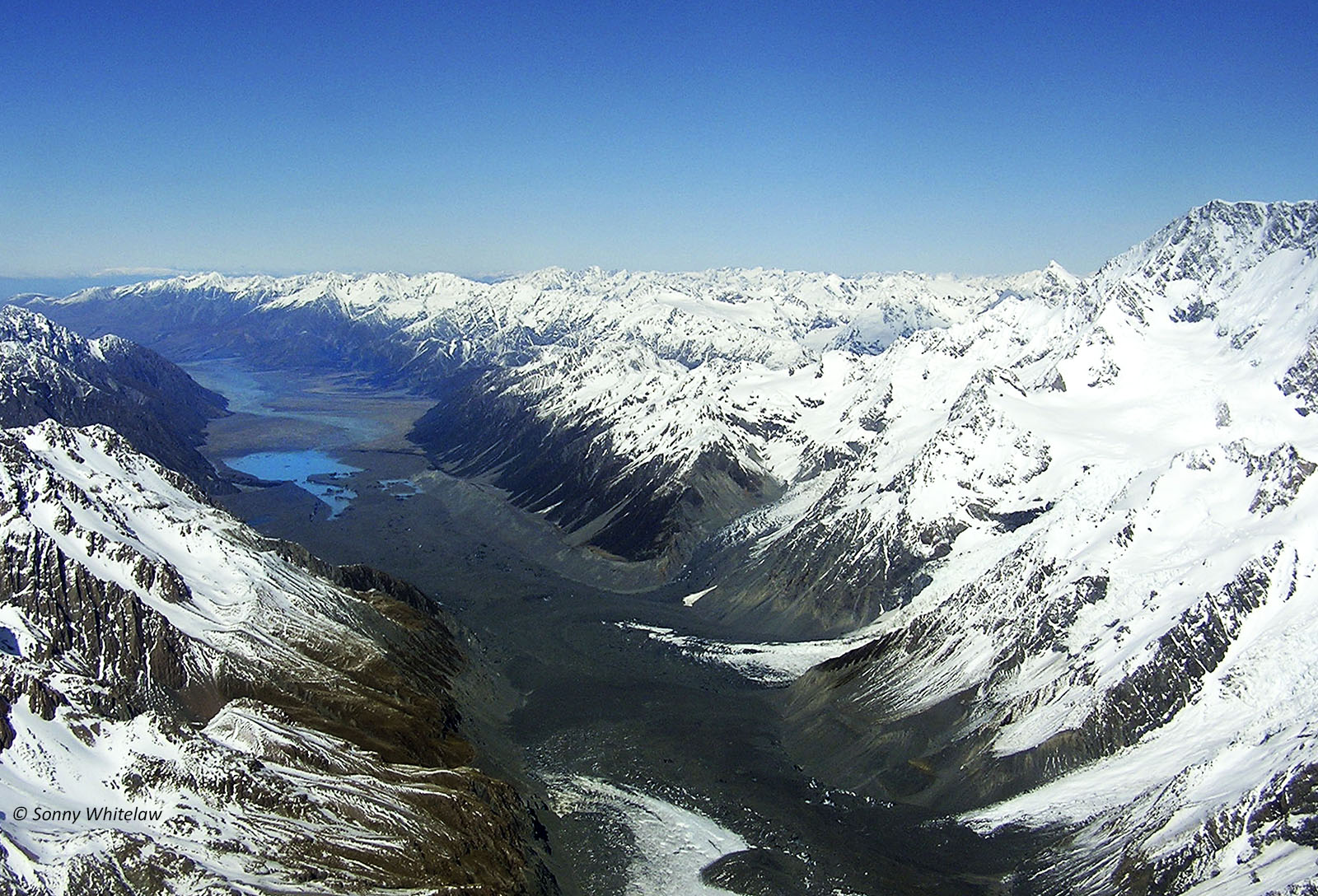Tasman River
Biodiversity & cultural significance
Important Bird Areas on Tasman River: links to 6-page PDF file that includes maps, habitat types, and threats relevant to this river. This document was extracted from Forest & Bird’s 177-page 20Mb file on all rivers, lakes, and coastal areas.
This video showcases the Tasman River’s magnificent setting at the foot of Aoraki Mt Cook, on of the areas where black stilt/kakī live, the last stronghold for the most endangered wading bird in the world.
Part of the Upper Waitaki River catchment, the 25km Tasman River is an outflow of the Tasman, Murchison, Hooker and Mueller Glaciers in Aoraki/Mount Cook National Park. It is included here as a separate page because significant conservation activities are being undertaken in this conservation land, as part of Project River Recovery which has been incorporated into the much larger recently formed Te Manahuna Aoraki Conservation Project.
Conservation activities
Te Manahuna Aoraki is a large-scale conservation project focused on restoring the iconic natural landscapes and threatened species of the upper Mackenzie Basin and Aoraki National Park.
Launched in November 2018, the project will enhance biodiversity across 310,000 hectares of New Zealand’s most stunning landscapes, including braided river systems, alpine habitats and Aoraki/Mount Cook National Park.
The area is home to many endangered species like kea, rock wren and the scree weta in the alpine zone and braided river species like wrybill, robust grasshopper, banded dotterel, and the world’s rarest wading bird, kakī/black stilt. See their 2019 Annual Report.
- Project River Recovery and the Kakī recovery programme are working together to test a catchment-wide predator trapping regime in the Tasman River. This project involves a range of predator control and monitoring techniques.
- Project River Recovery plans, publications, and annual reports
- Project River Recovery Annual Report 2021-2022
- Project River Recovery Strategic Plan 2012-2019
- Tasman predator control project (report)
- Update on Kaki Programme (2017)
- Outcomes Predator Control Project (2017)
- The breeding success of several braided river birds – wrybill, banded dotterel and black-fronted tern – is being monitored over five years to assess whether this level of predator control is helping these birds.
Water flow
- River Report 24-hour Infoline: river flows (updated twice daily), rainfall, sign up for text alerts
- Catchment map and monitored sites include scientific indicators for water quality (LAWA: Waitaki Catchment)


References & research material
- 2020: Dowding et al; Survival and breeding success of wrybills (Anarhynchus frontalis) in the Tekapo and Tasman Rivers, South Canterbury, New Zealand (Nortornis 67 | 755-764)
- Te Manahuna Aoraki 2019 Annual Report
- DOC Project River Recovery: 12-page bibliography of all reports, theses, diplomas, Department of Conservation publications and scientific papers produced or supported by the Project 1991-2007
- DOC River Life – 26-page PDF on the ecology and geological history of the Mackenzie basin
- See this 2019 video of kakī’ being released into the Godley River
- DOC catalogue of scientific publications: enter the relevant search terms in the ‘search’ dialogue box. You may need to vary your search, for example ‘black stilt’ gives far more results than ‘kaki’ or ‘kakī’
- ECan document library: enter ‘Tasman River’ in the ‘keywords‘ search field at the top of this page
- See Rivers for a more comprehensive list of braided rivers research and reference material
